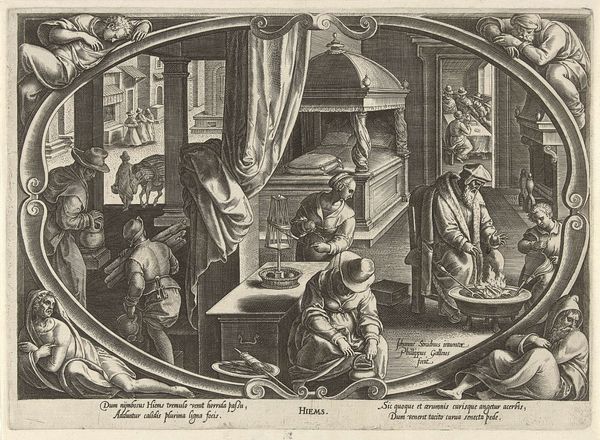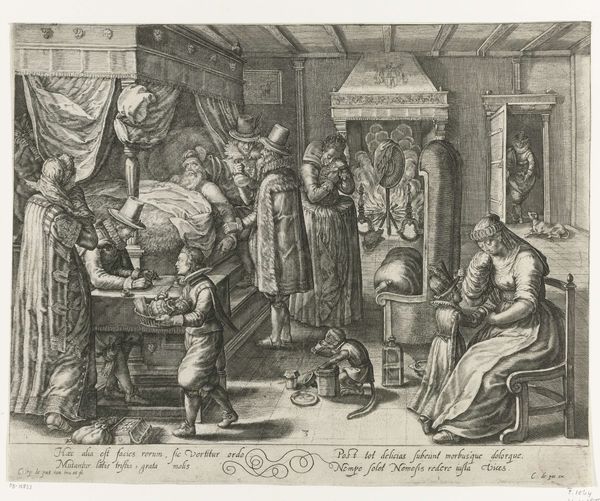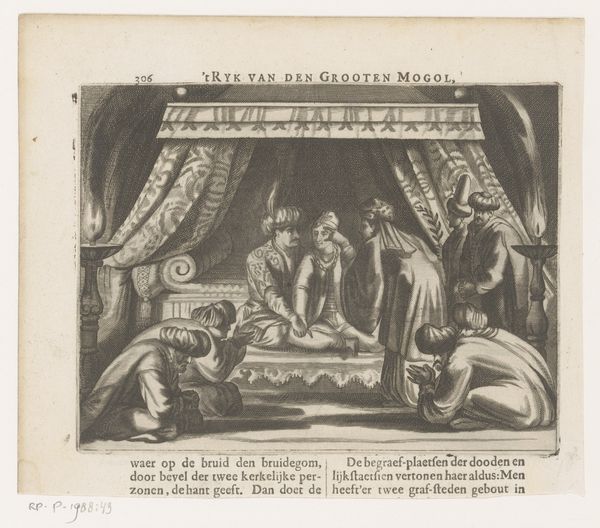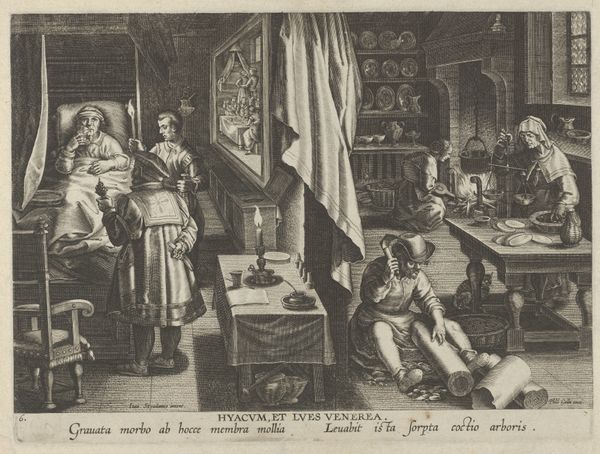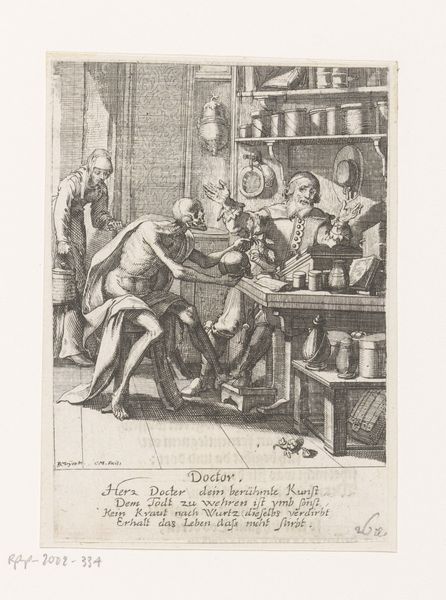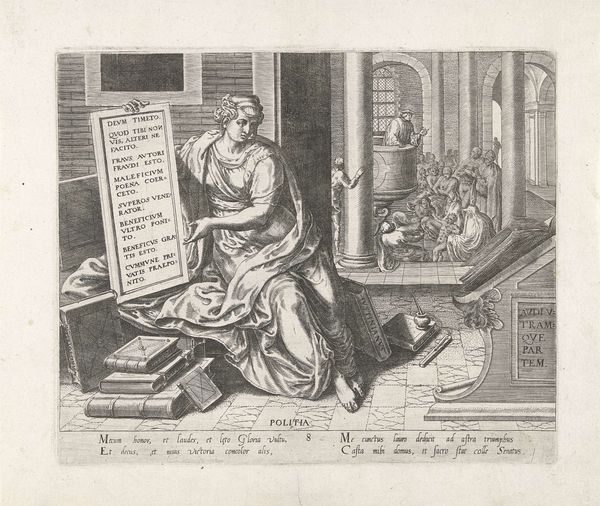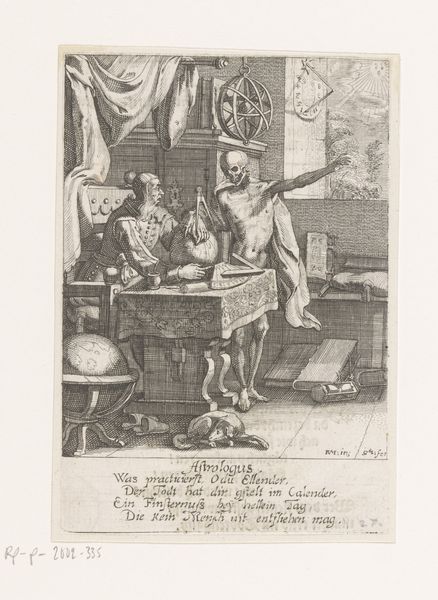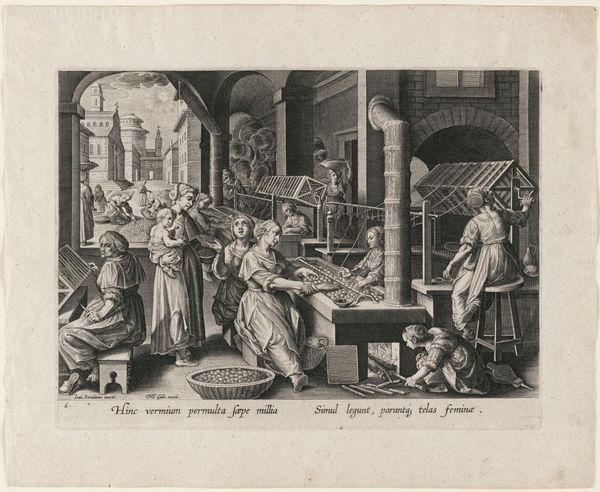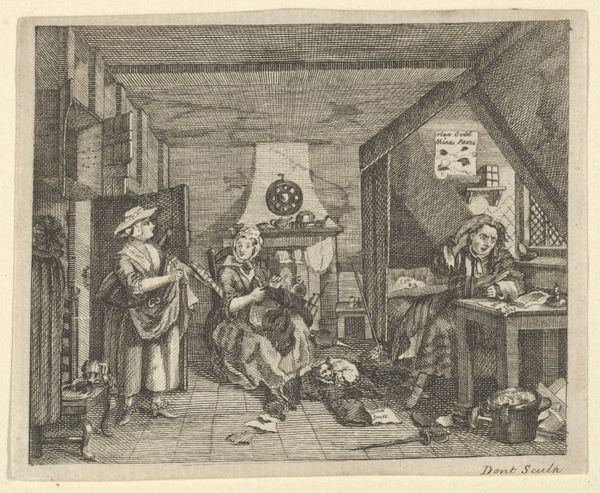![New Inventions of Modern Times [Nova Reperta], The Invention of the Compass, plate 2 by Jan Collaert I](/_next/image?url=https%3A%2F%2Fd2w8kbdekdi1gv.cloudfront.net%2FeyJidWNrZXQiOiAiYXJ0ZXJhLWltYWdlcy1idWNrZXQiLCAia2V5IjogImFydHdvcmtzLzBmZTgyZmE2LTE1YWUtNGY3Ni04Njg0LWMxNDUyNTljY2YzNi8wZmU4MmZhNi0xNWFlLTRmNzYtODY4NC1jMTQ1MjU5Y2NmMzZfZnVsbC5qcGciLCAiZWRpdHMiOiB7InJlc2l6ZSI6IHsid2lkdGgiOiAxOTIwLCAiaGVpZ2h0IjogMTkyMCwgImZpdCI6ICJpbnNpZGUifX19&w=3840&q=75)
New Inventions of Modern Times [Nova Reperta], The Invention of the Compass, plate 2 1595 - 1605
0:00
0:00
drawing, print, engraving
#
drawing
#
ship
# print
#
book
#
caricature
#
dog
#
landscape
#
figuration
#
11_renaissance
#
men
#
history-painting
#
northern-renaissance
#
engraving
Dimensions: sheet: 10 5/8 x 7 7/8 in. (27 x 20 cm)
Copyright: Public Domain
This engraving by Jan Collaert I, made in the late 16th century, allegorically represents the invention of the compass. Dominating the scene is the compass itself, surrounded by navigational tools such as a globe, books, and a model ship, alluding to the significance of the compass for exploration. The compass echoes the ancient symbol of the 'axis mundi' – the world's center, or the link between the heavens and the earth. We have seen this symbol used in antiquity, and the symbolism of the 'axis mundi' appears in temple architecture in ancient Egypt. The compass here becomes a nexus, connecting man's intellect with the vast, uncharted world. This reflects our collective desire to chart the unknown. The ship, suspended almost magically in the scene, carries an emotional weight. It embodies the hopes and fears associated with venturing into the unknown, a powerful force resonating within the viewer's subconscious, evoking a sense of adventure and the human spirit's relentless pursuit of discovery. Through time, the compass, initially a humble instrument, has resurfaced as a potent symbol of direction.
Comments
No comments
Be the first to comment and join the conversation on the ultimate creative platform.
